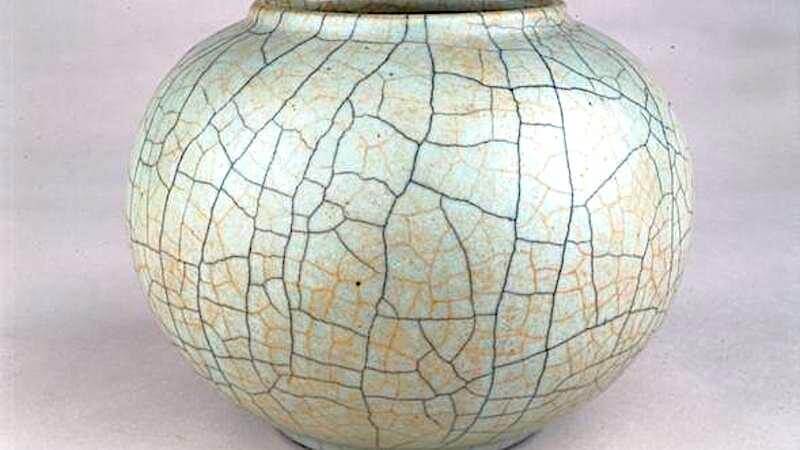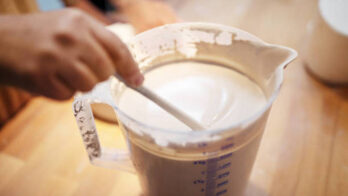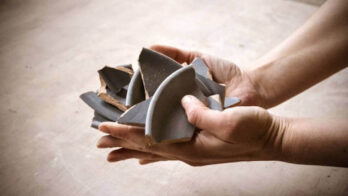When crafting your own pottery, you are making a small masterpiece that is very valuable because it is so unique. So naturally, you want it to be free of imperfections and defects, as long as this does not impact the integrity of the piece.
Certain styles focus on certain imperfections as part of the piece’s beauty, but most would agree that crazing is something unwanted. This is a defect that happens during the glazing process that can actually weaken the piece.
So, you might wonder—is crazing in pottery bad? While it might not be detrimental, it is something to be aware of and how to potentially fix it if it does occur to have a beautiful and durable piece of pottery that you are satisfied with.
What is Crazing in Pottery?
You have already learned that crazing is technically a defect in the pottery world, which does not always have to be a bad thing. However, crazing is detrimental to pottery because it weakens the integrity of the item.
A weaker foundation makes your pottery more prone to accidental breakage or cracking. Additionally, the cracks that appear during crazing can harbor bacteria in your pottery. The risks of cross-contamination and other bacterial concerns might even make you or others feel sick when they handle the pottery.
Since pottery extends beyond the category of decor, you must keep in mind that some pottery is used for eating and drinking. Any cup, plate, bowl, or other surfaces that food touches can become riddled with bacteria if the piece has undergone crazing.
Even if you are not creating the piece yourself, make sure to double-check any pottery you purchase from other sources. Not everybody looks closely for crazing, which can put you at risk of becoming ill if you eat or drink from it.
To identify crazing, you basically need to look for something similar to a spider web. There will be a miniature series of cracks that can be very visually appealing, but this is also an indication that the glazing process has gone wrong.
If you are buying pottery from the store, you can always ask specifically for pieces that are “uncrazed.” Anyone experienced with the material should know what this means and will carefully assist you with picking the best options.


Impacts and Causes
Crazing impacts the state of your pottery by altering its appearance. You already know what it looks like, but it can become much more than a cosmetic issue.
For example, when the glazing process is impacted by crazing, it might not be as big a deal if the piece is not being used to eat or drink from, but you should still be wary of the bacteria that could come forth from even the smallest bit of crazing.
In another sense, crazing might decrease its face value if you are trying to sell pottery because many see it as an imperfection. This is something to keep in mind if you are making pottery to make a living or even to make some extra money on the side.
This is a very subjective statement when you think about the “value” of a piece of pottery. Some people see beauty in imperfections, while others see something damaged or slightly less attractive. This depends on the individual, but it is something to consider if you are a collector.
First, ask yourself how you feel about it after knowing the risks are involved. Then, you can ask the question again—is crazing in pottery bad? Again, this is a personal decision to make, but it is something worth thinking about.
The cause of crazing is very simple. During the glazing process, there is too much tension. This is what causes the micro-cracks to form. If this tension is present, the glaze is under a lot of pressure while the piece’s body is cooling down.
Since both are not stretching simultaneously, this is why the cracks appear in tiny spider web-like patterns. The glaze used on pottery is very thin, and it takes practice to get the cooling process just right.
How to Fix Crazing in Pottery
If you have a piece of pottery that contains crazing, there are steps you can take to fix it. The best method is to apply a thinner coat of glaze over the top and then bake it again. However, there are some instances in which applying a thinner coat is not an option. In this case, you will want to add increasing amounts of flint.
Do not alter the other ingredients; the flint will help improve the piece’s texture. You might also need to fire the kiln for longer if you are trying to correct crazing. You need to do this by trial and error, but it can make a difference once you get the hang of it.
For preventative measures, you can try using different clay types and thinner glazes. This can help alleviate the pressure that begins to form and causes crazing. There are many different brands of clay available, all with different ratios of their ingredients.
Again, researching before you fire your kiln can save you a lot of wasted time and effort. Another great option is porcelain clay if you have already tried stoneware clay. While porcelain is more delicate, it should not be as prone to cracking.
Conclusion
Having a better understanding of what might happen while creating your own pottery makes you even better at the craft. Whether you do it for fun or for a living, it is great to be well-educated on the process as a whole.
You now understand what crazing is and how it could potentially impact the pieces you work hard on. With a list of possible fixes, you should be prepared to handle anything that might appear as a detrimental imperfection without starting all over again.
Featured image courtesy of Flyeschool



Enter your email below to get our FREE beginner friendly tips.
By entering your email address you agree to receive emails from Potters Passion. We'll respect your privacy and you can unsubscribe at any time.



